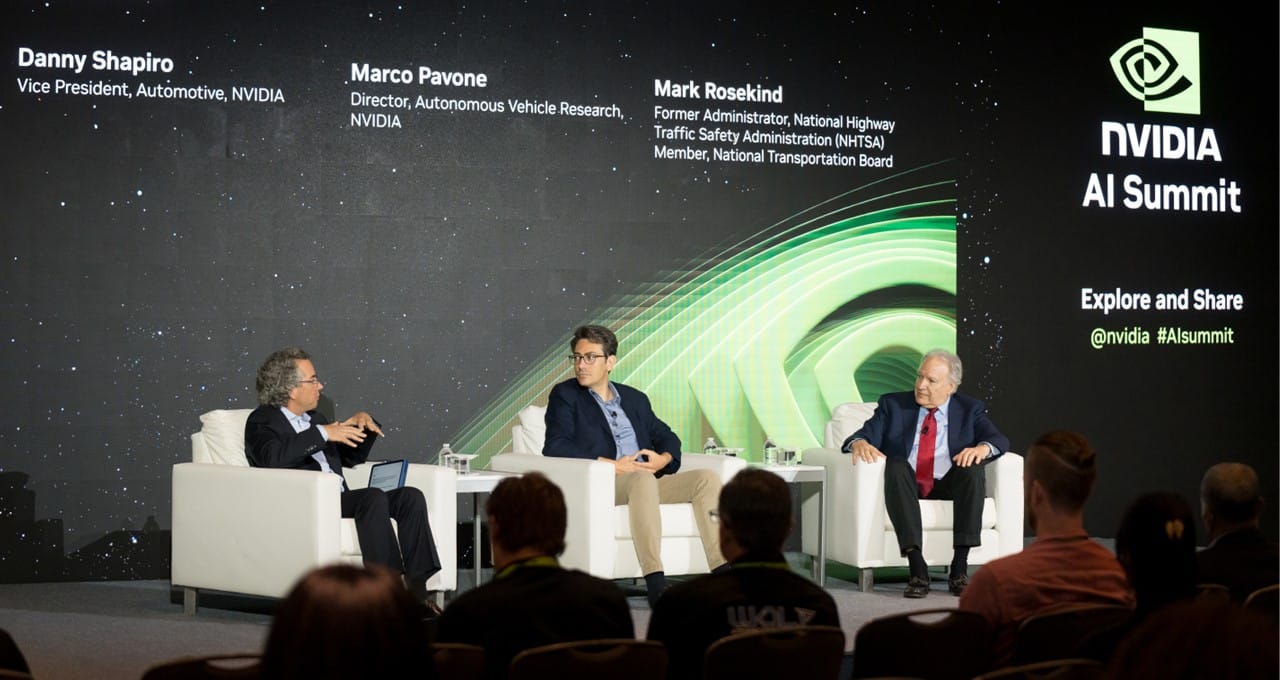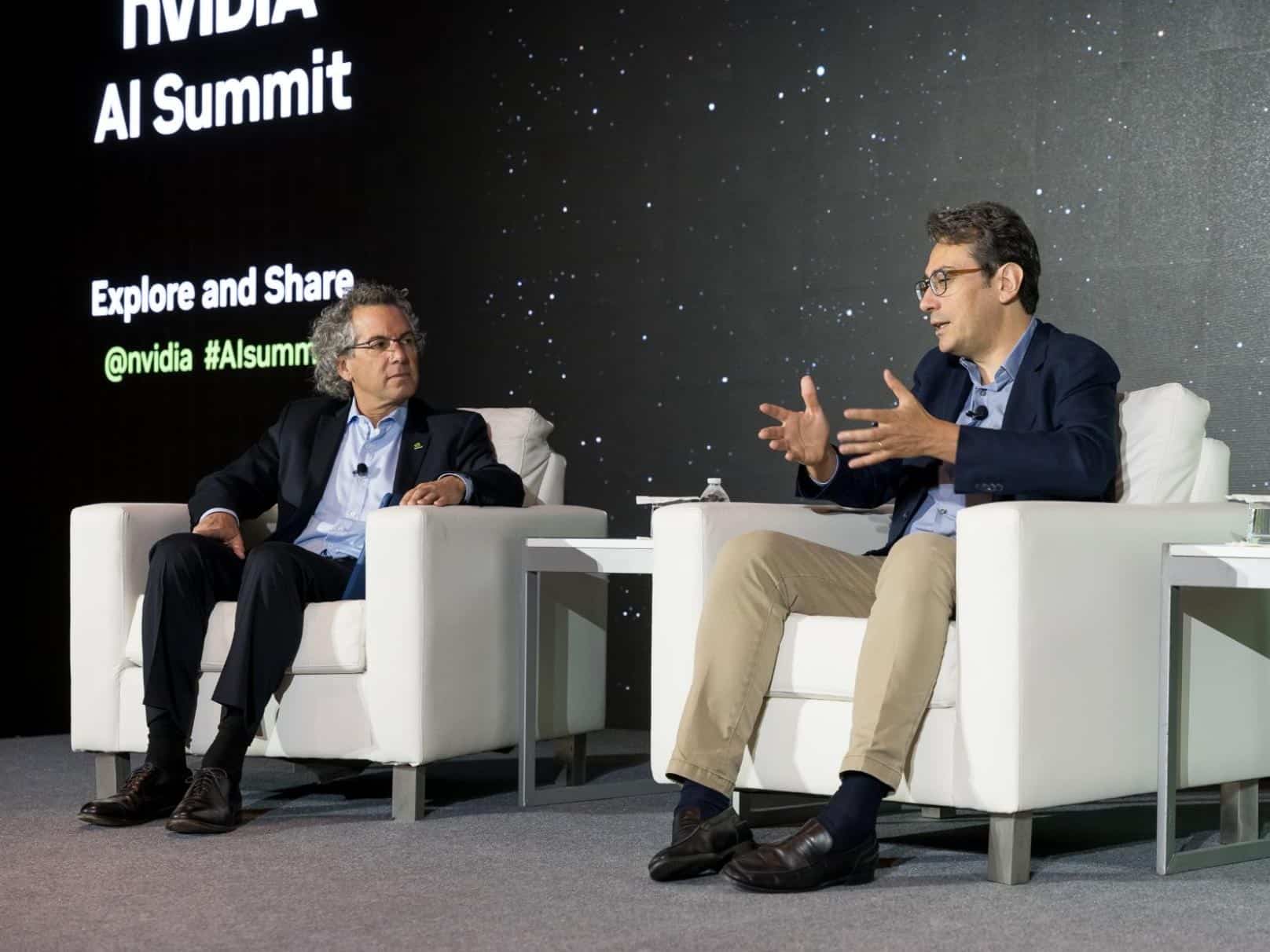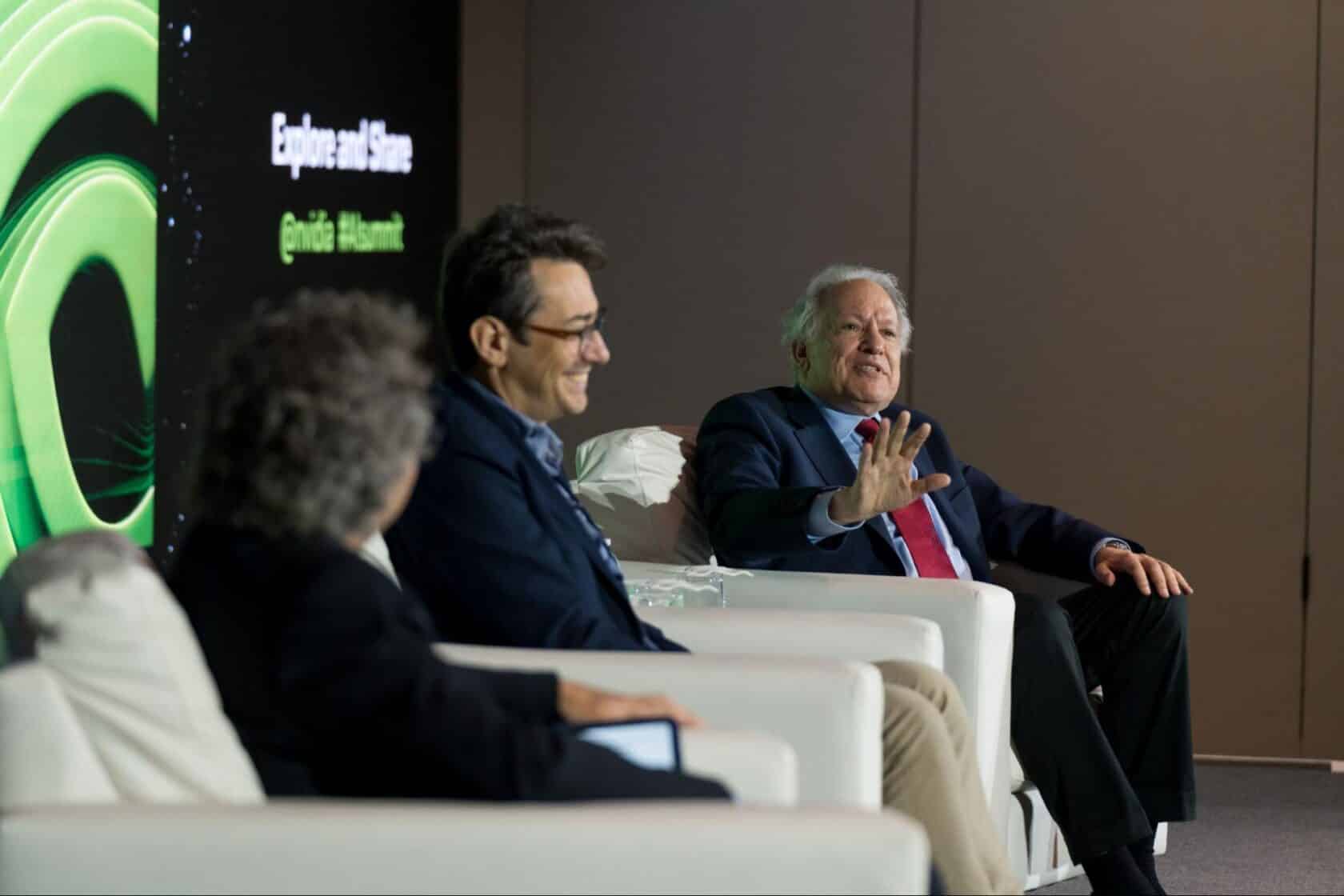The autonomous driving industry is shaped by rapid technological advancements and the need for standardization of guidelines to ensure the safety of both autonomous vehicles (AVs) and their interaction with human-driven vehicles.
At the NVIDIA AI Summit this week in Washington, D.C., industry experts shared viewpoints on this AV safety landscape from regulatory and technology perspectives.
Danny Shapiro, vice president of automotive at NVIDIA, led the wide-ranging conversation with Mark Rosekind, former administrator of the National Highway Traffic Safety Administration, and Marco Pavone, director of AV research at NVIDIA.
To frame the discussion, Shapiro kicked off with a sobering comment about the high number of crashes, injuries and fatalities on the world’s roadways. Human error remains a serious problem and the primary cause of these incidents.
“Improving safety on our roads is critical,” Shapiro said, noting that NVIDIA has been working for over two decades with the auto industry, including advanced driver assistance systems and fully autonomous driving technology development.
NVIDIA’s approach to AV development is centered on the integration of three computers: one for training the AI, one for simulation to test and validate the AI, and one in the vehicle to process sensor data in real time to make safe driving decisions. Together, these systems enable continuous development cycles, always improving the AV software in performance and safety.
Rosekind, a highly regarded automotive safety expert, spoke about the patchwork of regulations that exists across the U.S., explaining that federal agencies focus on the vehicle, while the states focus on the operator, including driver education, insurance and licensing.
Pavone commented on the emergence of new tools that allow researchers and developers to rethink how AV development is carried out, as a result of the explosion of new technologies related to generative AI and neural rendering, among others.
These technologies are enabling new developments in simulation, for example to generate complex scenarios aimed at stress testing vehicles for safety purposes. And they’re harnessing foundation models, such as vision language models, to allow developers to build more robust autonomy software, Pavone said.
One of the relevant and timely topics discussed during the panel was an announcement made during the AI Summit by MITRE, a government-sponsored nonprofit research organization.
MITRE announced its partnership with Mcity at the University of Michigan to develop a virtual and physical AV validation platform for industry deployment.
MITRE will use Mcity’s simulation tools and a digital twin of its Mcity Test Facility, a real-world AV test environment in its digital proving ground. The jointly developed platform will deliver physically based sensor simulation enabled by NVIDIA Omniverse Cloud Sensor RTX applications programming interfaces.
By combining these simulation capabilities with the MITRE digital proving ground reporting and analysis framework, developers will be able to perform exhaustive testing in a simulated world to safely validate AVs before real-world deployment.
Rosekind commented: The MITRE announcement “represents an opportunity to have a trusted source who’s done this in many other areas, especially in aviation, to create an independent, neutral setting to test safety assurance.”
“One of the most exciting things about this endeavor is that simulation is going to have a key role,” added Pavone. “Simulation allows you to test very dangerous conditions in a repeatable and varied way, so you can simulate different cases at scale.”
“That’s the beauty of simulation,” said Shapiro. “It’s repeatable, it’s controllable. We can control the weather in the simulation. We can change the time of day, and then we can control all the scenarios and inject hazards. Once the simulation is created, we can run it over and over, and as the software develops, we can ensure we are solving the problem, and can fine-tune as necessary.”
The panel wrapped up with a reminder that the key goal of autonomous driving is one that businesses and regulators alike share: to reduce death and injuries on our roadways.
Watch a replay of the session. To learn more about NVIDIA’s commitment to bringing safety to our roads, read the NVIDIA Self-Driving Safety Report.


